One of the emerging trends among young Uyghur film directors is a new attention to documentary filmmaking. This approach has long been a part of Uyghur cinema, but previously it was often part of a larger public relations presentation sponsored by the Chinese Culture Ministry. These new documentary short films are independently produced on limited budgets by young filmmakers who have an intimate knowledge of their subjects.
Part of the new emphasis on documentaries is due to the increasing affordability of cameras, lenses, and digital editing software. Another element is the way the expanding Uyghur and Chinese Internet has made forms of international and national documentary – from Werner Herzog and Lucien Castaing-Taylor to Wu Wenguang and the New Chinese Documentary Film Movement – more accessible to film students in Xinjiang. But perhaps an even more important factor is the way students from the rural countryside are seeing more and more of the way-of-life they grew up around vanish before their eyes.
It was these elements that prompted the young student filmmakers Abdukadir Upur and Dilmurat Tohti to go to Qargilik in southern Kashgar prefecture and film the ways in which craftsmen transform raw materials – reeds, wood, and rocks – into something they can sell at the local weekly market. The film they made was called The Edge of the Bazaar (with Chinese and decipherable yet at times inaccurate English subtitles). In Uyghur, the word “bazaar” itself is synonymous with the word for “town.” If someone says they are going to the bazaar, it means they are going to town. What the film title suggests, then, is that the movie is a look at life on the outskirts of town.
In the film we see men who have been working for decades in the same trades. While they received little formal education, we see the skill with which their hands can work with wood and reeds – using very few tools – to produce something precise and beautiful. We see men who know the desert, plants, and trees with an intimacy of someone who has lived close to the earth over the long duration of their lives. There is a beauty to the pace of life we see in the film; a poetics of movement, of form, and of the stark reality of the environment at the edge of an oasis town.
When I viewed this film with a young farmer from this area, named *Sadiq, he watched it with rapt attention. Throughout the film he had a strange smile on his face. It was strange, he said, to see his normal life represented on film. “I have some relatives who make mats just like that,” he said. “Those mats are used for the ceilings of Uyghur courtyard houses, or sometimes outside on top of the supa (raised platform) that is outside a house. Actually that work is a bit dangerous, if you trip and fall while you are walking among the reeds that you have already cut they can puncture you and kill you. I know of some people who have died from that kind of accident.”
When we got to the part where the farmer Ahmet carves spoons with a hatchet and chisel, Sadiq again noted the danger. Like Ahmet himself points out in the film, it is really easy to mangle one’s fingers when doing this kind of work. Sadiq showed me how he himself had also lost a joint from one of his little fingers by doing something similar.
When we got to the third part of the film and we watched the farmer named Osman going out to the desert to search for rock salt, Sadiq told me that in recent years the sale of this kind of salt has been regulated by the government. Now, he said, only government-approved companies are permitted to sell it after it has been processed and packaged in boxes in Qargalik and nearby counties. The local officials say that rock salt contains harmful substances, so in order to guarantee the safety of the people, it has to be regulated. Sadiq said this regulation was just another way for the local authorities to make money and control the population, but that people like Osman still find ways to sell it. They just hide what they are selling when they see police patrolling the bazaars.
Sadiq was really happy to see his way of life represented in this documentary. For him, the film was an illustration of the visceral experience of pain, a common experience of family life, and the long hand of the state. He, and the filmmakers, see the villagers as an important symbol of life in the rural Xinjiang countryside. The diegetic sound, the way the narration is limited to inter-titles, the way the farmers are able to speak for themselves, and the raw beauty of the desert oasis environment makes The Edge of the Bazaar a powerful way of amplifying, in high-definition living color, what life is like for millions of Uyghurs in Northwest China.
*Sadiq is a pseudonym.
Beige Wind runs the website The Art of Life in Chinese Central Asia, which attempts to recognize and create dialogue around the ways minority people create a durable existence, and, in turn, how these voices from the margins implicate all of us in simultaneously distinctive and connected ways.







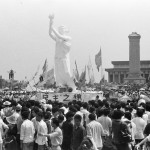
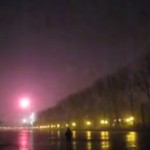
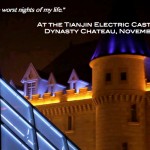









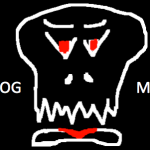



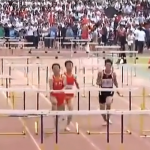
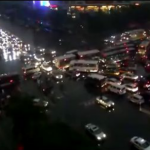
















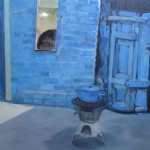



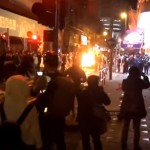

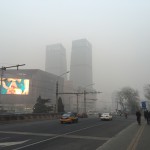

I’m an editor and would like to volunteer to help the filmmaker improve the English subtitles/translation. If the author knows the filmmaker, please pass on my email.
Brilliant! If you have finished volunteering to improve the subtitles, would you please offer the link of it with permission from the filmmaker? Cheers!
By the way, count me in if you need help with translations, I know Uyghur as well.